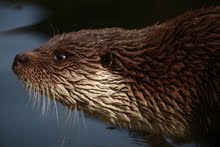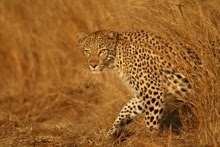Last year I attended a really cool bird festival in western Hungary. The 2009 Tatai Vadlud Sokadalom is happening this weekend again and I get to go down there to look at the geese, hang out with my birder friends and experience thousands of geese flying about at the same time!
Here is a short interview with Szimi aka Szimi Style from last year:
And I thought I would re-post my blog from last year's goose festival:
Awesome winter birding festival in Hungary
Wow, incredible! The annual Birding and Goose Festival in Tata (Tatai Vadlud Sokadalom), western Hungary was definitely a spectacle. We awoke on Saturday morning to what looked like a nice morning. It was still dark out but most of the birders were already active and starting to "hunt" birds for the bird race. But the real spectacle was happening on the lake shore. The lake was still dark (there are no artificial lights around the lake) but the geese were starting to to get restless - 20,000 of them!

Tons of Bean Geese (Ansa fabalis, Saatgans), with great big groups of Whitefronted Geese (Anser albifrons, Blässgans) and Greylag Geese (Anser anser, Graugans) and - rumour had it - a few Red-breasted Geese too (Branta ruficollis, Rothalsgans). But it wasn't only the spectacle of thousands of geese waking up that was amazing, but also the sheer number of people there to see it. Even at dawn, there was a huge line of birders and telescopes enjoying the spectable - the line of birders must have been at least about 100m long by sunrise.

One of the loveliest and most inspiring things for me personally was the sheer number of children participating in the festival. I would guess that at least 25-30% of the people at the festival were children in families. But this was not the reluctant child being dragged along on the parents' hobby outing - there were kids everywhere with binoculars about the neck looking for birds. Their enthusiasm for birding was infectious and it is really apparent that the Hungarians really know a thing or two about birding, birders and the development of our passion (and we could learn a lot from them!).

For the bird race, Martin Riesing and I were joined by an enthusiastic Hungarian birder from Budapest and the three of us trudged about in the morning's rain examining everything that moved. Into the afternoon the weather got better. I mean that in the loosest of senses for it was still flippin' cold (but it was a WINTER bird fest after all), but it just was not raining.
Our last tick for the day (and a lifer for me) was three Long-eared Owls (Asio otus, Waldohreule) which we picked up at dusk, just as they were heading out on the hunt.
All in all, about 5,000 people attended the Tata wild bird / goose festival (officially called the VIII. Tatai Vadlud Sokadalom 2008). This is even more impressive considering the poor weather. The festival was well organised (by MME, Hungary's local Birdlife International partner) and everyone was super friendly and helpfull. And the spectacle of 20,000 wild geese moving about at sunset would be hard to beat.

Swarovski Optik Hungary had a little stand at the bird fair with a video camera set up on a digiscoping setup so that people could see live images of the geese on a television screen if they did not have a telescope to use.

It really does seem like the Hungarians know a little something about birding and birders and could teach the rest of us a good thing or two...
If you would like to join the bird.at group heading to the Tatai Vadlud Sokadalom 2009 then we would be more than happy to hear from you!
Happy birding
Dale Forbes
Here is a short interview with Szimi aka Szimi Style from last year:
And I thought I would re-post my blog from last year's goose festival:
Awesome winter birding festival in Hungary
Wow, incredible! The annual Birding and Goose Festival in Tata (Tatai Vadlud Sokadalom), western Hungary was definitely a spectacle. We awoke on Saturday morning to what looked like a nice morning. It was still dark out but most of the birders were already active and starting to "hunt" birds for the bird race. But the real spectacle was happening on the lake shore. The lake was still dark (there are no artificial lights around the lake) but the geese were starting to to get restless - 20,000 of them!

Tons of Bean Geese (Ansa fabalis, Saatgans), with great big groups of Whitefronted Geese (Anser albifrons, Blässgans) and Greylag Geese (Anser anser, Graugans) and - rumour had it - a few Red-breasted Geese too (Branta ruficollis, Rothalsgans). But it wasn't only the spectacle of thousands of geese waking up that was amazing, but also the sheer number of people there to see it. Even at dawn, there was a huge line of birders and telescopes enjoying the spectable - the line of birders must have been at least about 100m long by sunrise.

One of the loveliest and most inspiring things for me personally was the sheer number of children participating in the festival. I would guess that at least 25-30% of the people at the festival were children in families. But this was not the reluctant child being dragged along on the parents' hobby outing - there were kids everywhere with binoculars about the neck looking for birds. Their enthusiasm for birding was infectious and it is really apparent that the Hungarians really know a thing or two about birding, birders and the development of our passion (and we could learn a lot from them!).

For the bird race, Martin Riesing and I were joined by an enthusiastic Hungarian birder from Budapest and the three of us trudged about in the morning's rain examining everything that moved. Into the afternoon the weather got better. I mean that in the loosest of senses for it was still flippin' cold (but it was a WINTER bird fest after all), but it just was not raining.
Our last tick for the day (and a lifer for me) was three Long-eared Owls (Asio otus, Waldohreule) which we picked up at dusk, just as they were heading out on the hunt.
All in all, about 5,000 people attended the Tata wild bird / goose festival (officially called the VIII. Tatai Vadlud Sokadalom 2008). This is even more impressive considering the poor weather. The festival was well organised (by MME, Hungary's local Birdlife International partner) and everyone was super friendly and helpfull. And the spectacle of 20,000 wild geese moving about at sunset would be hard to beat.

Swarovski Optik Hungary had a little stand at the bird fair with a video camera set up on a digiscoping setup so that people could see live images of the geese on a television screen if they did not have a telescope to use.

It really does seem like the Hungarians know a little something about birding and birders and could teach the rest of us a good thing or two...
If you would like to join the bird.at group heading to the Tatai Vadlud Sokadalom 2009 then we would be more than happy to hear from you!
Happy birding
Dale Forbes































.jpg)



.jpg)








.jpg)


